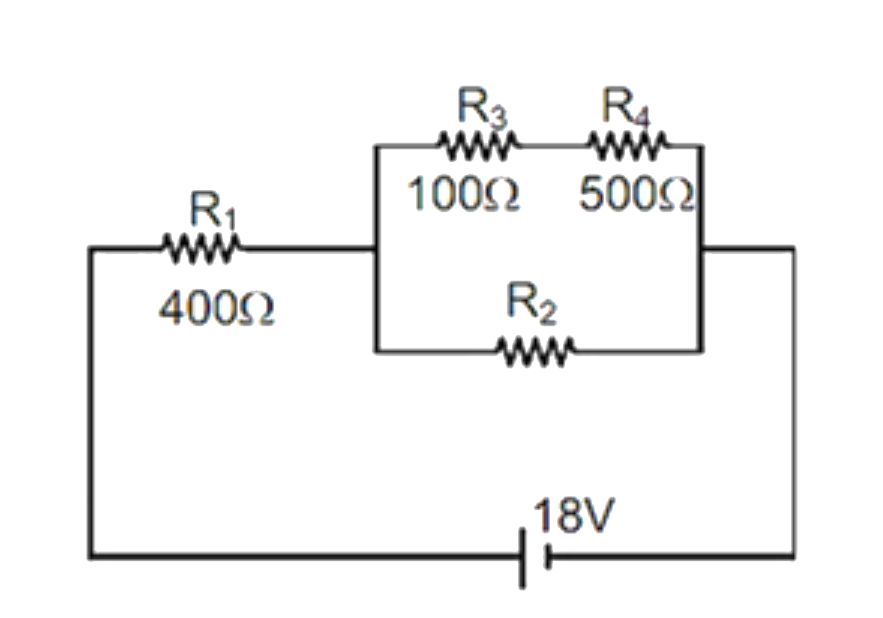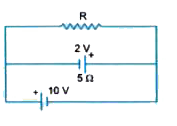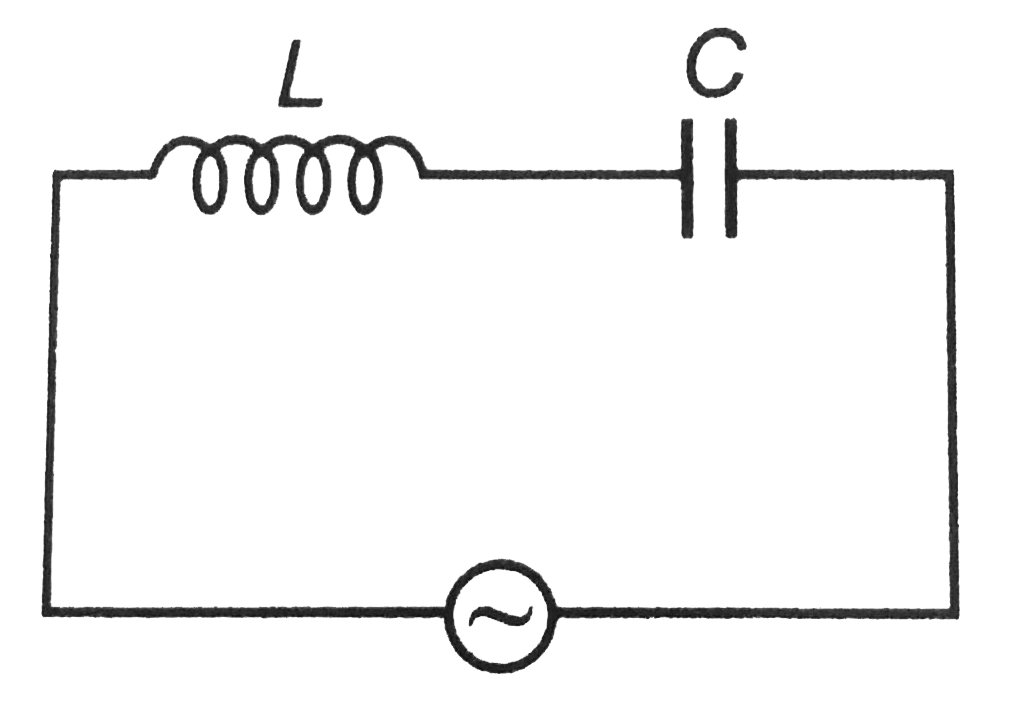Two conductors A and B resistance 5ωand10ω respectively are first joined in parallel and then in series. In each case the voltage applied is 20 V.
In which combination will the voltage across the conductors A and B be the same ?
Series arrangment
Parallel arrangement
Both of the above
None of the above
The correct Answer is:B
To solve the problem, we need to analyze the two configurations of the resistors A and B: first in parallel and then in series.
Step 1: Understand the configurations
1. Parallel Configuration: In a parallel connection, the voltage across each component is the same. Therefore, if we connect resistors A (5 ohm) and B (10 ohm) in parallel and apply a voltage of 20 V, the voltage across both A and B will be 20 V.
2. Series Configuration: In a series connection, the same current flows through each component, but the voltage across each component can be different depending on their resistances. The total voltage is divided among the resistors based on their resistance values.
Step 2: Calculate the voltage across each resistor in series
1. Total Resistance in Series:
Rtotal=RA+RB=5Ω+10Ω=15Ω
2. Current through the circuit: Using Ohm's law, we can find the current (I) flowing through the series circuit when a voltage of 20 V is applied:
I=VRtotal=20V15Ω=43A≈1.33A
3. Voltage across each resistor:
- Voltage across A (5 ohm):
VA=I×RA=43A×5Ω=203V≈6.67V
- Voltage across B (10 ohm):
VB=I×RB=43A×10Ω=403V≈13.33V
Step 3: Compare the voltages
- In the parallel configuration, the voltage across both A and B is 20 V.
- In the series configuration, the voltages across A and B are approximately 6.67 V and 13.33 V respectively.
Conclusion
The voltage across the conductors A and B will be the same in the parallel configuration.
Rtotal=RA+RB=5Ω+10Ω=15Ω
I=VRtotal=20V15Ω=43A≈1.33A
- Voltage across A (5 ohm):
VA=I×RA=43A×5Ω=203V≈6.67V
- Voltage across B (10 ohm):
VB=I×RB=43A×10Ω=403V≈13.33V
- In the series configuration, the voltages across A and B are approximately 6.67 V and 13.33 V respectively.
Similar Questions
Two conductors A and B of resistances 5Ωand10Ω respectively are first joined in parallel and then in series. In each case the voltage applied is 20V.
(a) Draw the circuit diagram to show the combination of these conductors in each case.
(b) In which combination will the voltage across the conductors A and B be the same?
(c ) In which arrangement will the current through A and B is the same?
(d) Calculate the equivalent resistance for each arrangement.
View SolutionTwo resistors X and Y of resistances 2 ω and 3 ω respectively are first joined in parallel and then in series. In each case the voltage supplied is 5 V.
(i) Draw circuit diagrams to show the combination of resistors in each case.
(ii) Calculate the voltage across the 3 Q resistor in the series combination of resistors.
View Solution
Knowledge Check
Two conductors A and B resistance 5ωand10ω respectively are first joined in parallel and then in series. In each case the voltage applied is 20 V.
Equivalent resistance in series combination is:A15ωB3.33ωC0.3ωDNone of the aboveTwo conductors A and B resistance 5ωand10ω respectively are first joined in parallel and then in series. In each case the voltage applied is 20 V.
Equivalant resistance in parallel combination is:A15ωB3.33ωC0.3ωDNone of the aboveTwo conductors A and B resistance 5ωand10ω respectively are first joined in parallel and then in series. In each case the voltage applied is 20 V.
In which arrangment will the current through A and b be the same ?ASeries arrangmentBParallel arrangementCBoth of the aboveDNone of the above
If the voltage across 500Ω is 5 V. then R2 is

View SolutionTwo cells, of voltage 10 V and 2 V and internal resistances 10Ω and 5Ω respectively, are connected in parallel as shown in Fig. Find the effective voltage and effective resistance of the combination.

View SolutionTwo resistors of resistances 10Ω and 20Ω are joined in parallel. A potential difference of 12V is applied across the combination. Find the power consumed by each resistor.
View SolutionTwo conductors A and B resistance 5ωand10ω respectively are first joined in parallel and then in series. In each case the voltage applied is 20 V.
Which of these circuit diagram shows the correct connection when A and B are joined in parallel?
View SolutionIn a series L−C circuit, the applied voltage is V0. if omega is very low, then the voltage drop across the inductor VL and capacitor VC are
 .
.
View Solution
